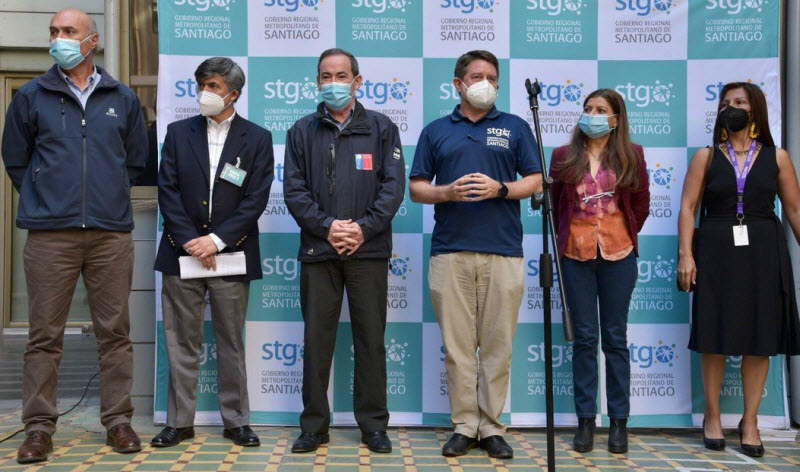
The governor of the Metropolitan Region of Santiago de Chile, Claudio Orrego, announced an unprecedented plan for eventual water rationing in Greater Santiago, after a drought that has lasted for almost 13 consecutive years.
“We are in an unprecedented situation in the 491-year history of Santiago where we have to prepare ourselves not to have enough water for all of us who live here,” the governor told reporters.
He added that “we must realize” the situation in which they are and that these almost 13 years of drought generate “plenty of possibilities” that water supply cuts will be reached.
The scheme they presented consists of four stages, ranging from green to red alert and will depend on the levels of the flows of the Mapocho and Maipo rivers, which supply about 1.7 million customers:
- Green Alert : diffusion for saving and prioritizing the use of groundwater.
- Early Warning : verification of emergency resources and restriction of pressures within the norm.
- Yellow Alert : pressure reduction, dissemination of the adjustment plan and preparation of emergency resources.
- Red Alert : rotating outages of a maximum of 24 hours and allocation of emergency resources for customer service.
In the event of a red alert, the measures will affect 142,613 clients who are supplied by the Mapocho river and 1,545,000 who depend on the Maipo.
According to Orrego, depending on the weather seasons, the chances of rationing could go down or up.
Gobernador Claudio @Orrego, presenta Protocolo formal que se aplicaría en el Gran Santiago (comunas de la provincia de Santiago, más Puente Alto y San Bernardo) ante un eventual racionamiento de agua, dada la crisis hídrica y emergencia climática que afecta a la región pic.twitter.com/a7AyJJdA8k
— Gobierno Regional Metropolitano de Santiago (@GobiernoRM) April 11, 2022
“We are constantly monitoring and we believe that as we get closer to winter, the probability of rationing decreases, but, probably, in spring or summer, it will increase. That is, as we have said, we cannot rule out rationing in the coming 12 months ,” he noted.
Scenarios according to the sanitary services company that provides the drinking water supply:
- Aguas Cordillera and Aguas Manquehue: In red alert, cuts will be applied on a rotating basis, which will be notified in time. 12 sectors would be affected and the service would be suspended every 12 days (300 l/s of deficit to be covered). Then they go from six sectors to four days (600 l/s of deficit to cover) and ends with four sectors with a cut every four days (900 l/s of deficit to cover).
- Aguas Andinas: It will have the same system of rotating cuts based on the water deficit. In this line, the company has a plan of six sectors and a cut every six days (3,000 l/s of deficit to be covered) and another in which four cut sectors are contemplated every four days (900 l/s to be covered).
“We cannot make it rain, but we can prepare ourselves so as not to reach an extreme situation,” said Governor Claudio Orrego.
For now, the governor called on citizens and industries to make responsible consumption of water and, for those who can, reuse it.
In December of last year, the Ministry of Public Works reported that 2021 was the driest year on record. “Only during the years 1968, 1998 and 2019, we had less rain than we have had this year,” said the then head of that State portfolio, Alfredo Moreno.
RELATED ARTICLES
- German School Bans Children from Drinking Water Because its Offensive
- 71% of People in Gaza are Experiencing Extreme Famine, Resorting to Eating GRASS
- Israel is Flooding Hamas Tunnels in Gaza, Endangering the Hostages
- Over 100 UN OFFICIALS Killed in Gaza Air Strikes
- Bizarre Clouds Seen in India, looking like as if they were ready to Swallow the Earth












Look at those silly people with diapers on their faces! Who would take such buffoons serious?